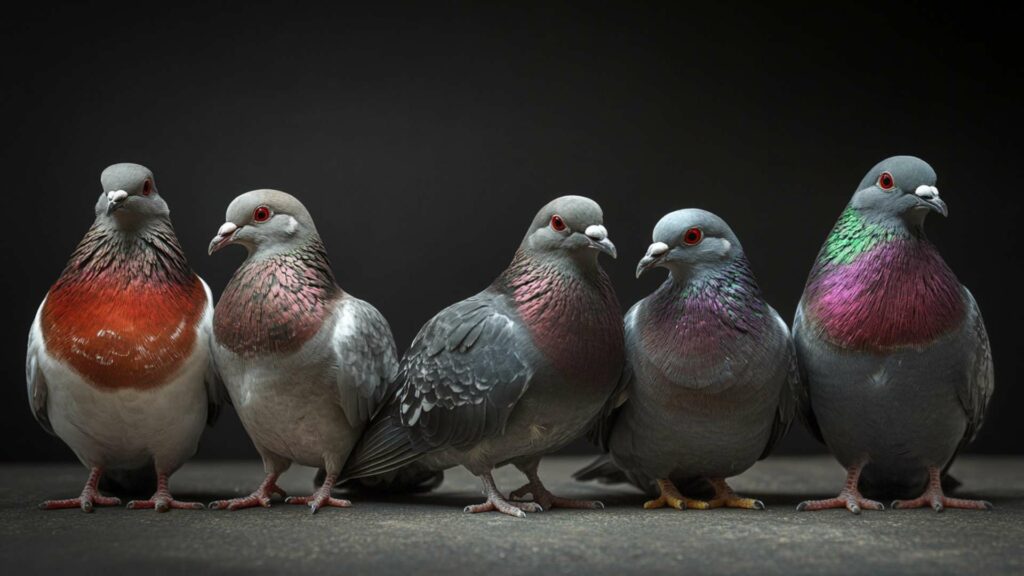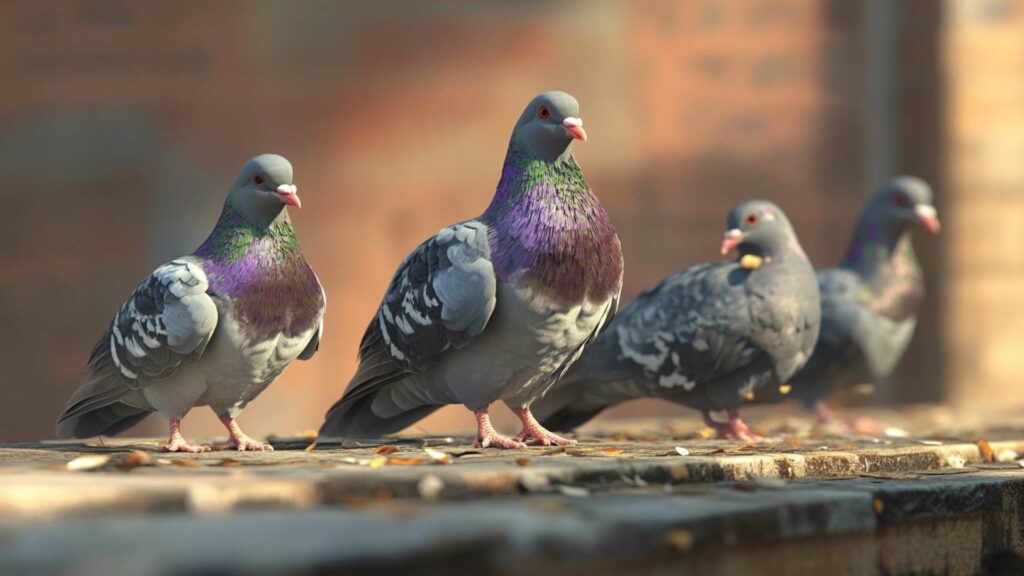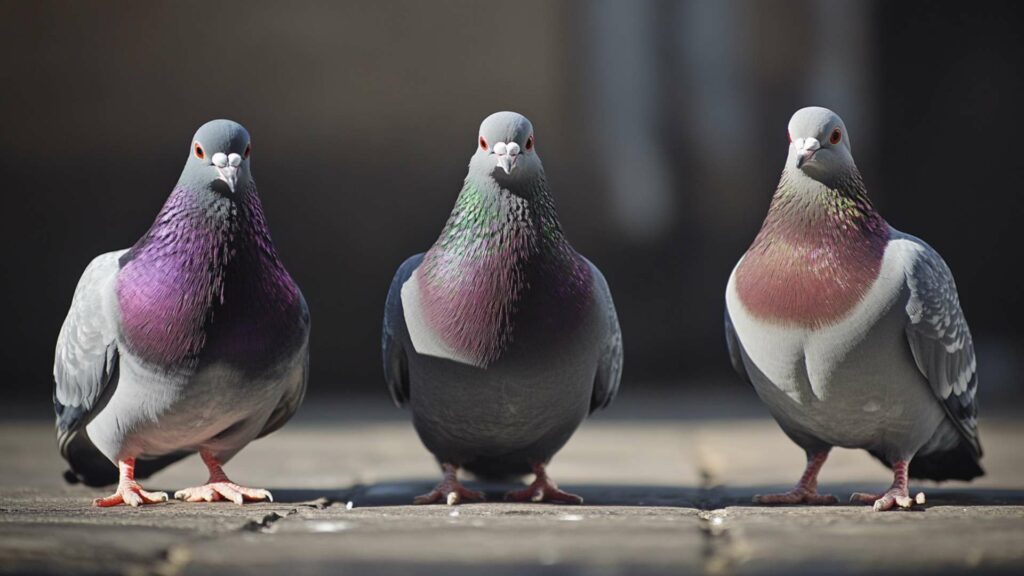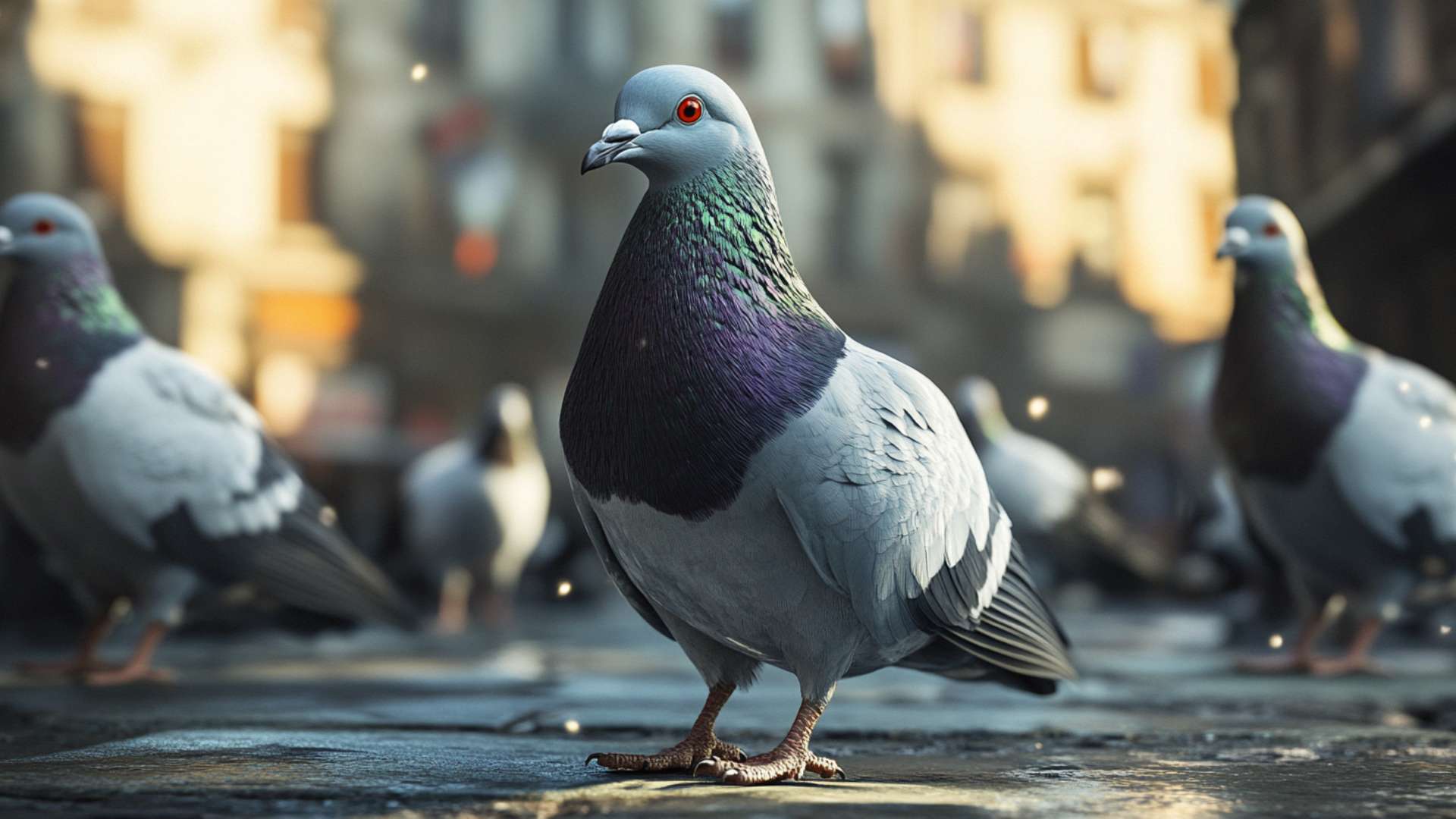The pesky pigeon problem on your porch can be a frustrating and persistent issue that many homeowners face. Pigeons, those determined and resourceful birds, have a knack for finding their way onto our porches in search of food, shelter, or simply a cozy spot to roost. While they may seem harmless at first glance, these feathered intruders can quickly become a nuisance with their droppings, noise, and potential damage to property.
The importance of keeping pigeons away from your porch cannot be overstated. Not only can their droppings create unsightly messes that require frequent cleaning, but they also pose health risks due to the presence of pathogens and parasites.
Furthermore, pigeons are known carriers of various diseases that can be transmitted to humans. Moreover, allowing pigeons to establish a regular presence on your porch might attract other pests as well.
These opportunistic birds often leave behind leftover food or birdseed from nearby bird feeders too, attracting rodents such as rats and mice. By taking proactive steps to discourage pigeons from making your porch their hangout spot, you’ll not only prevent damage and save yourself from the hassle of constant cleanup but also protect the overall hygiene and aesthetics of your home.
In this comprehensive guide on how to keep pigeons off your porch, we will explore various methods that have proven successful in discouraging these persistent birds. From natural deterrents like shiny objects and scare tactics to physical barriers such as sealing gaps and installing bird netting – we will cover both DIY solutions and professional interventions.
Understanding Pigeon Behavior

Pigeon Characteristics and Habits
Pigeons, also known as rock doves, are medium-sized birds with plump bodies and short necks. They have a distinctive cooing sound and are often gray or white in color.
Pigeons are highly adaptable creatures that can thrive in urban environments. They have keen eyesight and an excellent sense of navigation, which enables them to find their way back to their nests.
Pigeons are social animals that prefer to live in large flocks. They build their nests on ledges, rooftops, and other elevated areas that provide safety from predators.
These birds are known for their ability to breed rapidly, with each pair capable of producing multiple broods in a single year. This prolific nature contributes to the growing pigeon populations in cities worldwide.
Why Pigeons Are Attracted to Porches

Porches offer pigeons a variety of appealing features that make them attractive nesting sites. Firstly, porches often provide shelter from the elements, protecting the birds from rain and strong winds.
Moreover, porches typically have numerous nooks and crannies where pigeons can build their nests discreetly. Another key factor is food availability.
Pigeons are opportunistic feeders and will scavenge for food wherever they can find it. Porches often attract pigeons because they may contain spilled bird food or crumbs left behind by humans enjoying outdoor meals.
Additionally, if there are nearby trash cans or dumpsters, pigeons may be enticed by potential food sources. Porches offer pigeons a vantage point from which they can observe their surroundings safely.
Being able to perch on tree branches or porch railings allows them to keep an eye out for potential threats while having easy access to flight if necessary. Understanding these characteristics and attractions is crucial to finding effective solutions to prevent pigeons from settling on your porch.
By addressing these factors, you can discourage pigeons from considering your porch as an ideal nesting or feeding site. Note: The use of DIY methods, reflective surfaces, and shiny objects can be effective deterrents to keeping pigeons away and will be covered in subsequent sections.
Scare Tactics: Using Visual and Auditory Deterrents
Creating a Disorienting Environment for Pigeons
When it comes to keeping pigeons off your porch, visual and auditory deterrents can be highly effective. These scare tactics work by creating an environment that is disorienting and uncomfortable for pigeons, discouraging them from perching or nesting on your property.
One simple yet effective method is hanging shiny objects like CDs or aluminum foil strips. Pigeons are naturally drawn to reflective objects, so suspending these items in areas where they tend to congregate can be a great way to repel them.
Fake Predators: Owls and Snakes

Another ingenious way to deter pigeons is by utilizing fake predators. Pigeons are wary creatures, always on the lookout for potential threats. By strategically placing owl decoys or rubber snakes on your porch, you can create the illusion of danger to scare pigeons, effectively scaring off unwanted feathered visitors.
These faux predators tap into a pigeon’s natural instinct to avoid areas where they perceive potential harm. It’s important to periodically move these decoys around so that the pigeons don’t catch on to the ruse.
Auditory Disturbances: Wind Chimes and Sound Devices

Pigeons are sensitive to sound, making it another valuable tool in keeping them at bay. Wind chimes not only add a pleasant aesthetic touch but also create irregular noise patterns that disturb pigeons’ peace of mind. Opt for larger wind chimes with deeper tones as they tend to have greater impact.
Additionally, motion-activated sound devices provide an extra layer of auditory deterrence by emitting sporadic noises when triggered by pigeon movement. These devices can mimic predatory bird calls or even unexpected human sounds.
An Integrated Approach for Optimal Results
Remember, the key to successful pigeon deterrence is employing a combination of visual and auditory tactics. By combining hanging shiny objects, fake predators, wind chimes, and motion-activated sound devices, you create an environment that pigeons find unsettling and unwelcoming. However, it’s essential to periodically switch up these deterrents to prevent the pigeons from adapting or becoming desensitized.
A dynamic approach will yield better results in the long run. Using scare tactics through visual and auditory deterrents can be an effective way to keep pigeons off your porch.
Hanging shiny objects like CDs or aluminum foil strips takes advantage of their attraction to reflective surfaces. Placing fake predators such as owl decoys or rubber snakes taps into their instinctual fear response.
Utilizing wind chimes and motion-activated sound devices adds another layer of discomfort for these pesky birds. Employing an integrated approach by experimenting with different combinations of these methods will maximize your chances of achieving a pigeon-free porch sanctuary.
Physical Barriers and Exclusion Methods

Blocking access points: sealing gaps and openings on the porch structure
One of the most effective ways to keep pigeons off your porch is by blocking their access points. Pigeons are crafty, small birds, that can squeeze through even small gaps and openings. Start by carefully inspecting your porch structure for any cracks, crevices, or loose boards that could serve as entryways for these pesky birds.
Pay close attention to areas where the porch meets the walls or roof, as these are common trouble spots. Once you identify potential access points, it’s time to seal them up.
Use a high-quality caulk or weatherstripping to fill in gaps and cracks. This will not only prevent the pigeons nest from entering your porch but also help keep out other pests like rodents.
Inspecting for cracks, crevices, and loose boards
Diligent inspection is key when it comes to identifying vulnerable areas on your porch that pigeons could exploit. Examine every nook and cranny, paying particular attention to corners, joints, windowsills, and decorative trim. Look for signs of wear or damage that could create openings large enough for pigeons to slip through.
If you discover any loose boards during your inspection process, secure them firmly in place using nails or screws. Pigeons love finding cozy spots to nest on porches with loose wooden planks.
Applying caulk or weatherstripping to seal gaps
To effectively seal gaps found during the inspection process, opt for a high-quality caulk specifically designed for outdoor use. Apply the caulk generously into any crevices or cracks you find along the porch structure. Smooth it out with a caulking tool or your finger to ensure a tight seal.
Remember to choose a caulk color that matches your porch’s aesthetic, so it blends seamlessly. Additionally, weatherstripping is an excellent solution for sealing larger gaps around doors and windows.
Apply it along the edges to create an impenetrable barrier against pigeon intrusion. Weatherstripping not only keeps pigeons out but also helps with insulation, reducing energy loss from your home.
Repairing damaged screens or installing bird netting
If your porch has screens that are torn or damaged, it’s crucial to repair them promptly. Pigeons can easily slip through even the tiniest holes in screens, gaining access to your porch area.
Patch up any holes using screen repair kits readily available at most hardware stores. In situations where pigeons persistently target your porch, consider installing bird netting over open areas or commonly used perching spots.
Bird netting is a durable and humane way to prevent pigeons from landing and roosting on your porch. It creates an invisible barrier while allowing airflow and sunlight through.
Homemade Pigeon Repellents

Cayenne Pepper Solution: Mixing Water with Cayenne Pepper Powder
When it comes to keeping those pesky pigeons off your porch, a simple homemade solution involving cayenne pepper can work wonders. Pigeons have a strong aversion to spicy and pungent smells, making this natural deterrent highly effective. To create the cayenne pepper solution, mix water with cayenne pepper powder in a spray bottle.
The exact ratio depends on your preference and the intensity you desire. Before applying the solution, ensure that your porch is clean and free from any food sources or nesting materials that may attract pigeons.
Spray the cayenne pepper solution liberally on areas where pigeons tend to land or nest, such as railings, ledges, or window sills. Pigeons are repelled by the strong smell of the solution and will avoid those areas altogether.
Remember to reapply the mixture after rainfall to maintain its effectiveness. Additionally, be cautious when using this method near plants or gardens as high concentrations of cayenne pepper may harm vegetation.
Vinegar Spray: Diluting Vinegar with Water in a Spray Bottle
Another effective homemade pigeon and bird repellent is vinegar spray. Vinegar contains acetic acid, which is known for its strong smell that repels not only pigeons but also other wildlife seeking shelter on your porch.
To create vinegar spray, simply dilute vinegar with water in a spray bottle using equal parts of each. Generously spritz areas where pigeons frequently land or nest with the vinegar solution.
This will deter them from settling down due to the unpleasant scent it emits. Vinegar is safe for both humans and pets but ensures you don’t apply it directly onto plants as it may affect their growth.
Reapply regularly to maintain its potency, especially after rainfall. With persistence and consistency, vinegar spray can effectively prevent birds, including pigeons, from turning your porch into their cozy nesting spot.
Essential Oils: Using Peppermint, Eucalyptus, or Citrus Oils as Deterrents
If you prefer a more aromatic solution to keep pigeons at bay, essential oils can be an excellent choice. Pigeons find strong scents like peppermint, eucalyptus, or citrus oils highly displeasing and will steer clear of areas where these fragrances are present. To create an essential oil pigeon deterrent spray, mix a few drops of your chosen oil with water in a spray bottle.
Shake well before application to ensure the oil is evenly distributed in the mixture. Spray the solution on your porch’s railings, ledges, or any other pigeon-prone areas.
Alternatively, you can soak cotton balls with essential oils and strategically place them near potential landing spots. The scent will continuously repel pigeons and discourage them from making your porch their home.
Remember to refresh the essential oil solution regularly as scents tend to fade over time. Experiment with different fragrances to find the one that works best for repelling pigeons from your beloved porch.
Pigeon-Proof Landscaping Techniques

Planting pigeon-deterring vegetation
When it comes to the keeping birds and pigeons off your porch, harnessing the power of nature can be an effective method.
By strategically planting certain types of vegetation, you can create a natural barrier that discourages pigeons from landing and nesting in your outdoor space. One excellent choice is to incorporate prickly plants like holly bushes or rosemary into your porch landscaping.
Pigeons hate the sensation of their delicate feet getting pricked, deterring them from perching on these thorny guardians. Holly bushes, with their sharp pointed leaves and dense growth patterns, not only offer aesthetic appeal but also help prevent birds from landing on your porch railings or other desired perching areas.
Rosemary, apart from being a wonderful culinary herb, has needle-like foliage that pigeons find uncomfortable and will avoid. By incorporating these prickly plants strategically around your porch and nearby areas, you can create an environment that deters pigeons while maintaining a visually appealing landscape.
Installing thorny vines along porch railings
If you want to take pigeon-proofing to another level, consider installing thorny vines along your porch railings or any other potential landing spots for these pesky birds.
Vines such as Bougainvillea or climbing roses have beautiful blooms but are also armed with formidable thorns that provide a natural deterrent for birds seeking a cozy perch. These thorny vines act as both a visual deterrent and a physical barrier, making it challenging for pigeons to land comfortably or build nests near your porch area.
Not only will this keep the pigeons away, but it will also add an elegant touch to your outdoor space. Just ensure regular maintenance by trimming back the vines and removing any stray branches to keep them from obstructing your porch or becoming an eyesore.
Growing tall grasses to obstruct landing areas
Another effective method to get rid of pigeons and discouraging pigeons from landing on your porch is by growing tall grasses and dense vegetation around the area.
Pigeons prefer open spaces where they can easily spot potential threats and food sources, so by creating an obstacle in their line of sight, you can dissuade them from choosing your porch as their hangout spot. Consider planting ornamental grasses such as pampas grass or maiden grass, which can grow quite tall and provide a natural barrier.
These grasses not only obstruct the views but also offer nesting materials for smaller birds, attracting species that are more desirable than pigeons. By incorporating these dense plants into your landscape design, you create an environment that discourages pigeons while providing a haven for other feathered friends.
In the battle against pigeon populations invading your porch, utilizing pigeon-proof landscaping techniques is a creative and nature-friendly approach. By planting prickly vegetation like holly bushes or rosemary, installing thorny vines along railings, or growing tall grasses to obstruct landing areas, you create an environment that discourages pigeons while enhancing the visual appeal of your outdoor space.
These methods work in harmony with nature without resorting to harmful chemicals or invasive measures. Keep in mind that combining multiple strategies often yields better results when it comes to preventing birds from congregating on your porch.
However, if DIY methods do not provide satisfactory results or if the pigeon problem persists despite your efforts, do not hesitate to seek advice from a pest control specialist who can offer professional solutions tailored to your specific situation. Remember, finding a balance between nature and practicality is key when it comes to keeping pesky pigeons at bay.
Professional Solutions
Bringing in the Experts – Hiring Pest Control Services
If you’ve tried various DIY pigeon control methods to no avail, it might be time to call in the professionals. Pest control services specialize in managing pest birds, including pigeons.
These experts have an extensive understanding of pigeon behavior and are equipped with the necessary tools and knowledge to effectively eliminate your pigeon problem. One option that pest control services may use is installing deterrent devices such as anti-roosting spikes or nets.
Anti-roosting bird spikes are designed to prevent pigeons from perching on ledges or railings by making those areas uncomfortable for them. These humane devices do not harm the birds but discourage them from settling down on your porch.
Bird Deterrent Gel: A Sticky Solution
Another effective solution employed by professionals in pigeon removal is bird deterrent gel. This sticky substance is applied to surfaces where pigeons tend to roost, creating an unpleasant texture that discourages their presence. The gel is non-toxic and safe for both humans and birds, providing a long-lasting barrier that deters pigeons from returning.
Pigeon Netting: Thwarting Flight Paths
Pigeon netting is a physical barrier made of strong, lightweight material that can be installed over certain areas of your porch to prevent pigeons from accessing those spaces altogether. Professional installers will ensure that the netting is securely fitted so as not to harm the birds while effectively blocking their entry points.
By employing these professional solutions, you can enjoy a pigeon-free porch without resorting to harmful or inhumane methods.
Conclusion
Keeping pigeons off your porch requires understanding their behavior and implementing effective deterrents suited for your needs. From natural techniques like scare tactics and physical barriers, to homemade repellents or professional solutions, you have various options to deter birds, at your disposal.
Remember that pigeons congregate where there is a food source, so be diligent in not inadvertently providing them with bird food. Taking proactive measures to discourage birds from using pet food and gathering on your porch will help prevent the formation of pigeon nests and reduce pigeon populations.
By deterring pigeons, you not only maintain a clean and pest-free porch but also decrease the risk of pigeon droppings, which can spread disease and damage surfaces. With some patience and persistence, you can create an environment that deters pigeons while still welcoming other birds to grace your outdoor space.
So why wait? Take action today and make your porch a peaceful haven free from pesky pigeons.
Embrace the beauty of nature without the hassle of unwanted feathered guests. Your serene sanctuary awaits!
Keep Pigeons at Bay with D-Termination: Las Vegas’ Top Pest Control Choice!

If you’re grappling with pigeon-related concerns, D-Termination is your solution. Our team of specialists excels in pigeon deterrence and the rejuvenation of cleanliness and integrity in your surroundings. Bid farewell to pigeons by opting for D-Termination’s highly efficient pest control today!
Get in touch with us at 702-919-6310 or visit dtermination.com to arrange your pigeon control service and regain your space from these unwelcome pests.
Frequently Asked Questions:
The best deterrent for pigeons often involves physical barriers like spikes, netting, or scare devices.
You can keep birds away from your porch using deterrents like visual scare devices, netting, or ultrasonic repellers.
To create a pigeon deterrent, consider using items like reflective tape, decoys, or roosting spikes.
WD-40 is not an effective way to get rid of pigeons.








